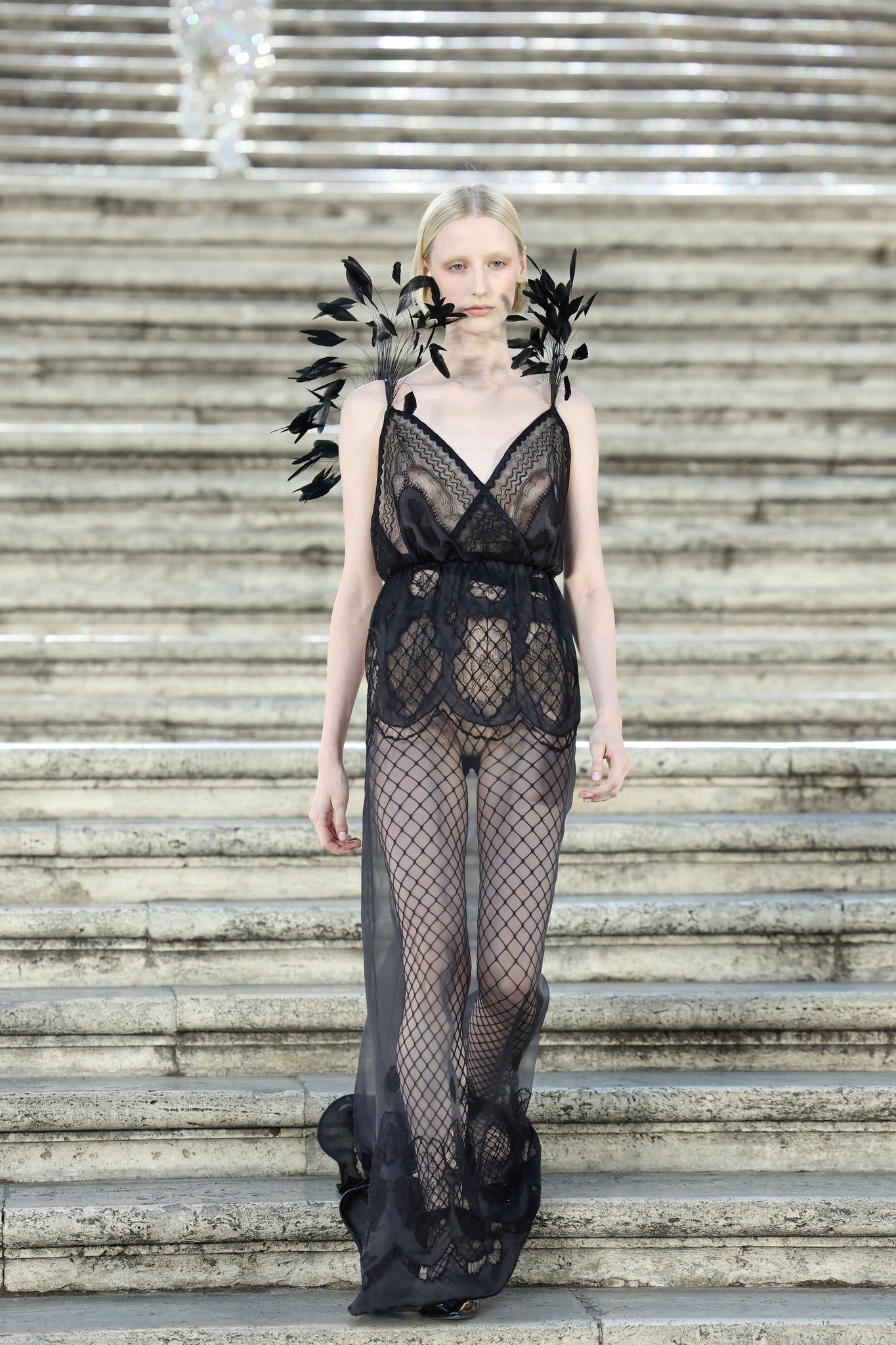Designers Should Lead The Way In Highlighting Fashion Workers
Pierpaolo Piccioli brought his atelier team down the haute couture runway last week - that should be the just the beginning.


Making the couture pieces we saw on the runways in Paris this week takes exceptionally long hours and months of highly skilled work from dozens of people. Valentino designer Pierpaolo Piccioli decided to highlight this by ending the haute couture show on Saturday with the entire atelier staff walking down the runway with him for a bow. “Why am I crying?” one person responded to a video of the moment posted by New York Times fashion critic Vanessa Friedman. “These are the people that do the actual WORK and bring the collection to life,” said another.
It’s not the first time this has happened. Margiela did it for years, and other designers have brought out some or part of the staff as well. But this particular group stood out on social media because we are in a moment when people are begging the fashion industry to recognize who makes our clothes. On the couture side, it makes sense to do it. For them, it’s not necessarily about conditions in an atelier or wages (though this is extremely important). It’s about highlighting value. The more people it takes to create a piece, the more hours and hands that touch a gown, the more value it has. Of course, the creative vision is important, but it is the craftsmanship that is truly special. It’s also a moment for people to see and ask for more. Many people pointed out the lack of diversity within the atelier staff – a pervasive issue among the high fashion brands.
So why doesn’t this happen elsewhere in the industry?
For starters, the rest of the fashion industry doesn’t want or need you to see the human aspect of clothing, because that sort of value doesn’t serve their bottom line. If you value the fact that dozens of hard-working people put hours into your clothing, then you may not as easily see it as a shifting trend that can be bought and sold with ease. Also, highlighting workers, and consequently the work behind the clothing, would require brands to actually know who is making the clothes - even most “sustainable” brands don’t know that.
The “Who Made My Clothes” movement, started by Orsola de Castro and Carry Somers of Fashion Revolution, has been trying to shift the narrative for almost a decade in this exact way. Simply asking could be enough to spark the conversation among consumers and push brands to do the same.
In the spirit of loving clothing and celebrating those who make it, here are some pieces I loved from the collection.



******************************************************************************
Thank you for reading!!
This Stuff is a newsletter by me! fashion journalist, Alyssa Hardy. Three times a week, I unpack the ways our clothes impact the world through news, essays, interviews and more. Subscribe for free here and follow me on Instagram, Facebook and Twitter.
You can preorder my book "Worn Out: How Our Clothes Cover Up Fashion's Sins" here.




